World War One: Royal Flying Corps pioneers remembered
- Published

Magnificent men - members of the Royal Flying Corps
For soldier Robert Mansel, it has always been a source of pride that two of his great-grandfathers served in the newly formed Royal Flying Corps in World War One, and survived.
Until now though, Regimental Sgt Maj Mansel from Skewen in Neath Port Talbot - of 1st The Queen's Dragoon Guards - had only heard stories about pioneers of the skies Sir Courtenay Mansel and Flt Lt Wallis St. John Littlewood passed down from his father.
But on a visit to The Shuttleworth Collection in Biggleswade, Bedfordshire,, external he got up close and personal with some of the aircraft they may have flown.
"The smell of the varnish, the powerful engine up front, it gives me a real sense of what it was like for them," he said as he clambered up into the cockpit of an SE5a, flown towards the end of the conflict.
As he is informed the plane is the only genuine airworthy SE5a which survives anywhere in the world, the immensity of the moment sinks in.
"I just feel a connection with them, these men who I've never met," he said.
"It's like they are sitting on my shoulder and pointing out some of the mechanisms and how they work."
He said Sir Courtenay was originally a captain in the Army who went across to the newly formed Royal Flying Corps.
"So instead of spending the war in the trenches he was flying across them," he said.
His other great-grandfather Flt Lt Littlewood was also a pilot, who was involved in the technical side of the development of machine guns on planes.
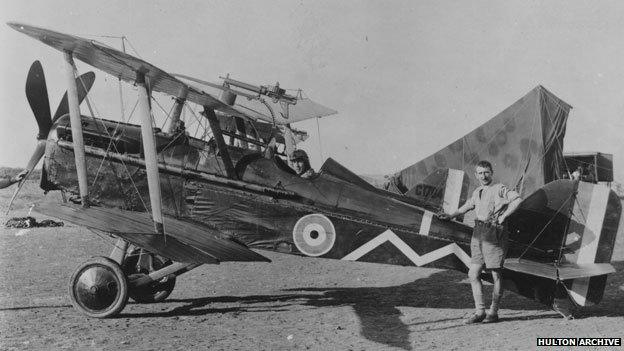
The SE5a was popular with the early airmen
He said: "He was looking at the machine guns and where they were mounted.
"At the start of the war they were originally mounted at the back of the planes to shoot targets, but in the latter stages of the war they were front mounted too. The men could then shoot through the blades and this made them a more accurate shot while in flight."
Regimental Sgt Maj Mansel explores how pilots and planes helped win the war during his visit to the Shuttleworth Collection
At the start of World War One, aircraft were relatively crude and basic, but by the end of the war they had transformed into fighters and bombers.
According to Andy Jones, a volunteer helper at Shuttleworth, aircraft were already seen as vital to the war effort by 1915.
"In the lead up to the Battle of Loos, Field Marshal Douglas Haig, who commanded the British Expeditionary Force, said that if the weather prevented aircraft from flying, he may have had to call the attack off," he said.
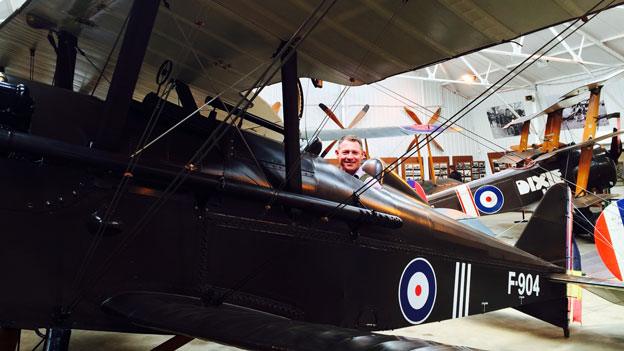
'It gives me a real sense of what it was like for them' says Robert Mansel, sitting in an SE5a
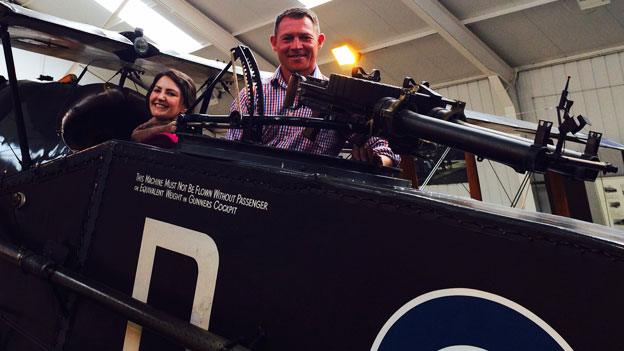
Robert Mansel with Charlotte Dubenskij in the cockpit of the Bristol F.2 fighter
Wooden frames covered in Irish linen formed the basis of aircraft in the war, while the fuel tanks were often situated directly under the observer's seat or in front of the pilot's seat.
Rob Millinship, a pilot at Shuttleworth, said this caused great concern for the men who crewed them.
"One of the main fears was fire," he said, "and if the craft caught fire, it was a long way down. You were going to die."
Mr Millinship said the men who flew these planes were incredibly brave.
"Men like RSM Mansel's great-grandfathers were chosen for their ability to operate these then technologically advanced machines, and they took on the role knowing their chances of survival were slim," he said.
"But had these guys been born now, they'd still be flying fighters."
Sir Courtenay was a farmer and land owner in Carmarthenshire and later a lawyer.
Many of the men who made up the now defunct Royal Flying Corps were chosen because of their horse riding skills.
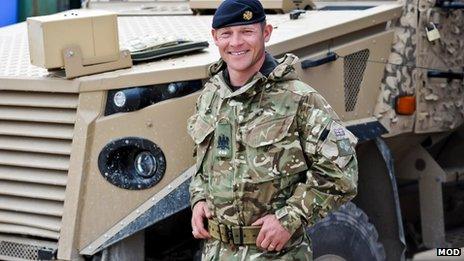
Robert Mansel feels a connection with his great-grandfathers
"To operate these early machines, you had to be able to react to ever changing circumstances, be that weather, temperature or altitude," said Mr Jones.
"Men who were keen horse riders could already prove they had this in abundance."
Although aircraft used today are far more sophisticated compared to those used in World War One, Mr Jones says the way they are used has not really changed.
"It's almost exactly the same," he said. "They were used for Army co-operation, reconnaissance, bombing. These roles which are still crucial now were being pioneered then."
The British Army originally only saw aircraft as being useful for reconnaissance missions and capturing aerial photographs of the enemy, but that soon changed.
"The Germans really cottoned on to the idea that you had to stop those reconnaissance missions and so the fighter plane was born," said Mr Jones.
"By the end of the war our planes were bombing night and day."
The introduction of aircraft into the battlefield of World War One changed the nature of warfare.
By the end of the conflict, bombing raids - coupled with the intelligence they provided - meant they were so essential that an entire new branch of the services was created - the Royal Air Force.
- Published16 June 2014

- Published15 June 2014
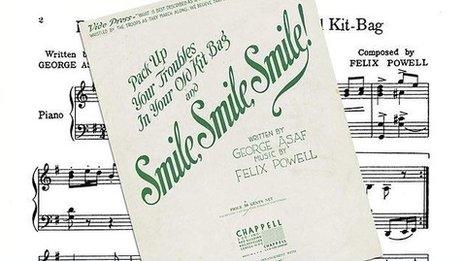
- Published15 June 2014

- Published11 June 2014
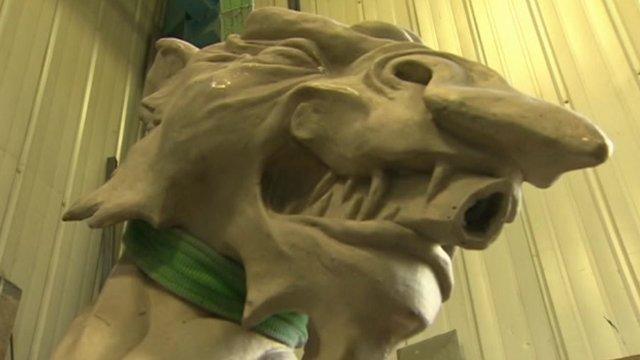
- Published24 February 2014
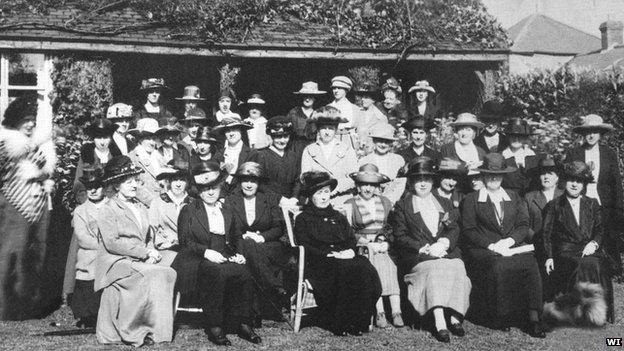
- Published13 June 2014
